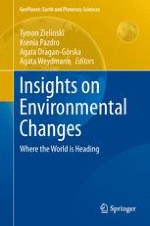2014 | Buch
Insights on Environmental Changes
Where the World is Heading
herausgegeben von: Tymon Zielinski, Ksenia Pazdro, Agata Dragan-Górska, Agata Weydmann
Verlag: Springer International Publishing
Buchreihe : GeoPlanet: Earth and Planetary Sciences
